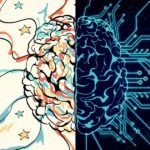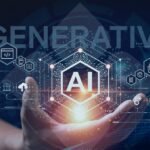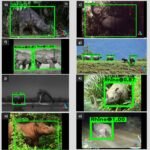AI in the Gaming Industry
The gaming industry has always been at the forefront of technological advancements, and the integration of artificial intelligence (AI) has revolutionized the gaming experience. From enhancing gameplay mechanics to creating intelligent virtual opponents and enabling immersive storytelling, AI has become an integral part of modern gaming. With its ability to analyze data, learn from player behavior, and generate dynamic content, AI is reshaping the gaming landscape, making it more immersive, engaging, and personalized than ever before.
- Intelligent NPCs: Bringing Virtual Characters to Life
Non-Player Characters (NPCs) play a crucial role in creating immersive game worlds, and AI has significantly enhanced their capabilities. AI-powered NPCs can exhibit intelligent behavior, adapt to changing situations, and interact with players in realistic ways. These virtual characters can learn from player actions and develop unique personalities, making gameplay more dynamic and engaging. AI algorithms enable NPCs to display emotions, learn new skills, and provide realistic dialogue, making them more lifelike and enriching the overall gaming experience.
- Procedural Content Generation: Endless Possibilities
AI algorithms excel in generating content, and this has been leveraged to create vast and diverse game worlds. Procedural content generation techniques utilize AI to generate terrain, landscapes, buildings, and even entire universes, saving developers time and resources. AI algorithms can create unique levels, quests, and items, ensuring that no two gameplay experiences are the same. By using AI-powered procedural content generation, game developers can provide players with endless possibilities, keeping the game fresh and exciting with each playthrough.
- Player Behavior Analysis and Adaptive Gameplay
AI can analyze player behavior patterns and adapt gameplay accordingly, creating a more personalized and challenging experience. By observing how players interact with the game, AI algorithms can adjust difficulty levels, provide customized hints, or dynamically modify the game environment. This adaptive gameplay ensures that players are continuously challenged and engaged, as the game adapts to their skill level and preferences. AI-driven player behavior analysis also enables game developers to gather valuable insights for future game design and improvement.
- Realistic Physics and Simulations
AI algorithms have greatly contributed to realistic physics simulations in games. By incorporating physics engines driven by AI, developers can create lifelike environments and accurate simulations of motion, gravity, and collisions. These physics simulations enhance the realism of game mechanics, allowing for more immersive gameplay experiences. Whether it’s the realistic movement of characters, the destruction of objects, or the simulation of fluid dynamics, AI-driven physics engines bring a new level of authenticity and interactivity to games.
- Intelligent Game Design and Testing
AI is also playing a significant role in game design and testing processes. AI algorithms can analyze player feedback, review gameplay sessions, and provide insights into improving game mechanics and user experience. Additionally, AI-powered playtesting can identify bugs, glitches, and balance issues, ensuring that games are polished and optimized before release. By leveraging AI in game design and testing, developers can create high-quality games that resonate with players and deliver exceptional experiences.
- AI-Based Protagonists and Storytelling
AI is transforming storytelling in games by creating dynamic narratives and AI-driven protagonists. AI algorithms can generate branching storylines that adapt to player choices, creating a personalized narrative experience. Furthermore, AI-powered protagonists can respond intelligently to player actions and make decisions that impact the game world. This dynamic storytelling adds depth, immersion, and replay value to games, as players witness the consequences of their choices and interactions with AI-driven characters.


































